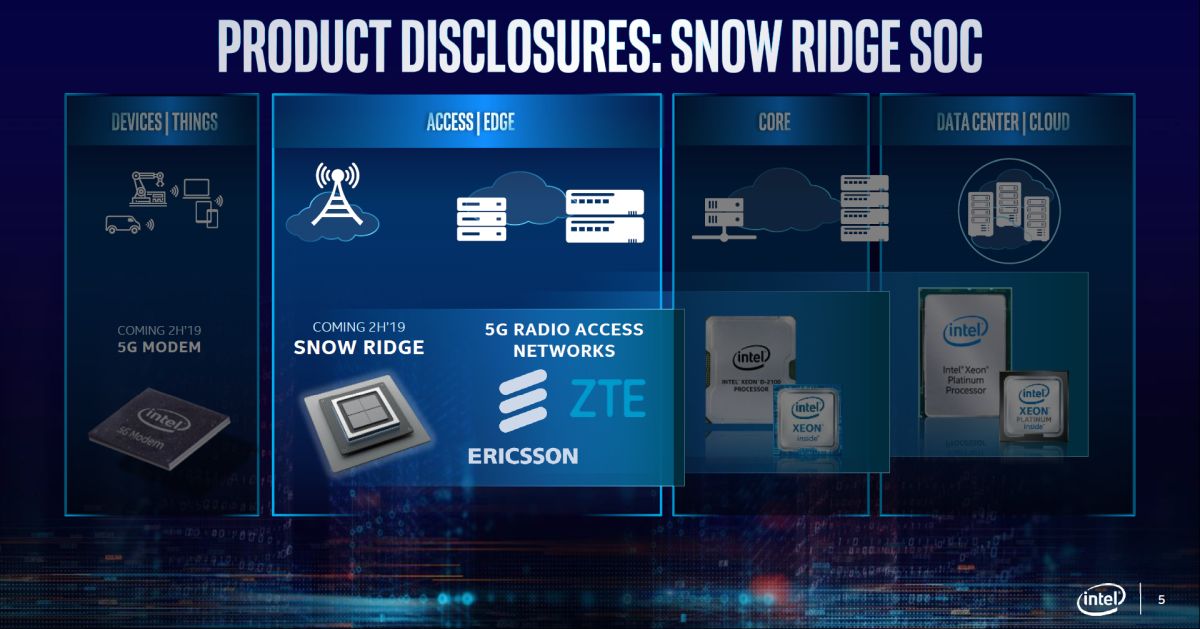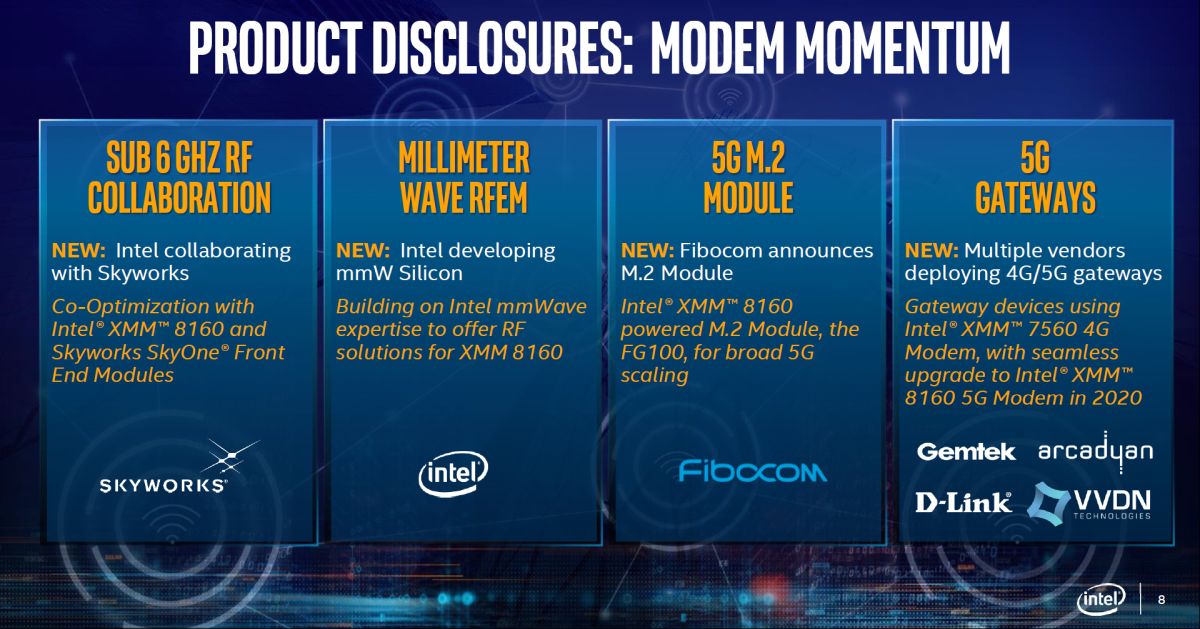Over at MWC 2019, Intel gave the world an update on its progress into the realm of 5G connectivity with the official announcement of a few new products. Chief among these products was its new Snow Ridge SoC and Hewitt Lake. The latter being its next generation Intel Xeon D CPU.
Snow Ridge, in particular, has popped up on the internet several times prior to its official announcement. The chipset is a 10nm network SoC that is developed specifically for 5G wireless access, and edge computing. Simply put, it’s a component made for network infrastructures. The takeaway from the announcement is that both Ericsson and ZTE have agreed to adopt Intel’s new Snow Ridge SoC as an integral part of their 5G base station designs.
While Intel did not provide an exact rollout date for networks devices running on Snow Ridge, it did say that production for these devices will begin sometime during the second half of 2019.


Moving on, Intel also announced the existence of its upcoming Xeon D CPU. Currently codenamed as “Hewitt Lake”. Besides the slide telling us that the CPU will have an improved base clockspeed, Intel didn’t divulge much else in terms of specifications for the CPU. Not even a release date was for the CPU was announced.
Intel also spoke briefly about another next-generation CPU, Cascade Lake. According to the semiconductor maker, the new workstation CPU will carry support for its Optane DC Persistent Memory, and that there will be a variation housing as many as 48-cores, 96-threads, and a total of 12 memory channels on advance performance.

In keeping with the topic of 5G connectivity and speeds, Intel announced a new 5G Traffic Accelerator network card. The card is designed to accelerate network traffic at speeds of 100Gbps. It comes with 9GB DDR4 DIMM memory, and has bandwidths of 8×10 Gbps and 4×25 Gbps.


Lastly, Intel also announced that it is working with several modem makers in order to bring the 5G connectivity and solutions to the market. To that end, it is collaborating with a company called Skyworks, providing the company with its XMM 8160 modem. In order to develop a new 6GHz radio frequency (RF). Additionally, another company by the name of Fibocom announced that it had create an M.2 cellular module, designed to integrate Intel’s XMM 8160 modem into 5G gateway devices.
Follow us on Instagram, Facebook, Twitter or Telegram for more updates and breaking news.



